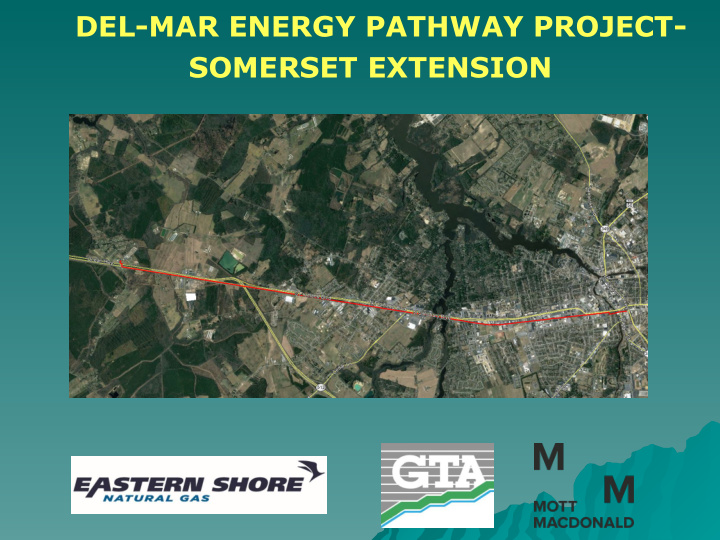



DEL-MAR ENERGY PATHWAY PROJECT- SOMERSET EXTENSION
DEL-MAR ENERGY PATHWAY PROJECT ▪ Eastern Shore Natural Gas is an interstate pipeline company regulated by the Federal Energy Regulatory Commission (FERC) and has been transporting natural gas to the Eastern Shore of Maryland for over 60 years ▪ A Certificate of Public Convenience and Necessity was granted by FERC in December 2019 (CP18-548-000) ▪ The Somerset Extension is a portion of the overall Del-Mar Energy Pathway Project, and is the only portion of the project located in Maryland
SOMERSET EXTENSION ▪ Location: Salisbury, Fruitland, and Eden areas of Wicomico and Somerset Counties ▪ Waterbody: South Prong Wicomico River, Tonytank Pond, Passerdyke Creek, and an unnamed tributary of the Wicomico River ▪ Applicant: Eastern Shore Natural Gas Company (ESNG) ▪ Engineer: Mott MacDonald ▪ Env. Consultant: Geo-Technology Associates, Inc. (GTA) ▪ Purpose: Extension of ESNG’s existing pipeline system from Salisbury, MD to Eden, MD in order to meet market demand in Somerset County
SOMERSET EXTENSION ▪ Approximately 6.8 miles of 10-inch diameter mainline pipeline extension ▪ The route will be approximately 91% within existing rights-of-way
SOMERSET EXTENSION Alternative Routes ◆ Three proposed routes were evaluated ◆ The proposed route is the preferred alternative ◆ The proposed route is largely within existing road and railroad rights-of-way – Minimizes impacts to wetlands, waterways, and undisturbed areas – The proposed route is shorter than either alternative route, and would also result in less road crossings and impacts to residential and commercial buildings than either alternative
SOMERSET EXTENSION Alternative Routes
SOMERSET EXTENSION Wetland and Waterway Impacts ◆ 1 tidal waterbody crossing, 3 nontidal waterbody crossings and 1 wetland crossing – The majority of wetland and waterbody crossings will utilize Horizontal Directional Drilling (HDD) in order to avoid direct impacts to wetlands and waterways – Due to overhead utility lines, the use of HDD is not feasible for one nontidal wetland crossing and one nontidal stream crossing, so open trench construction is proposed for those crossings ◆ To minimize impacts, the limit of disturbance was reduced from the typical 100-foot width to a 75-foot width within the wetland and stream crossings
Thank you!
Recommend
More recommend